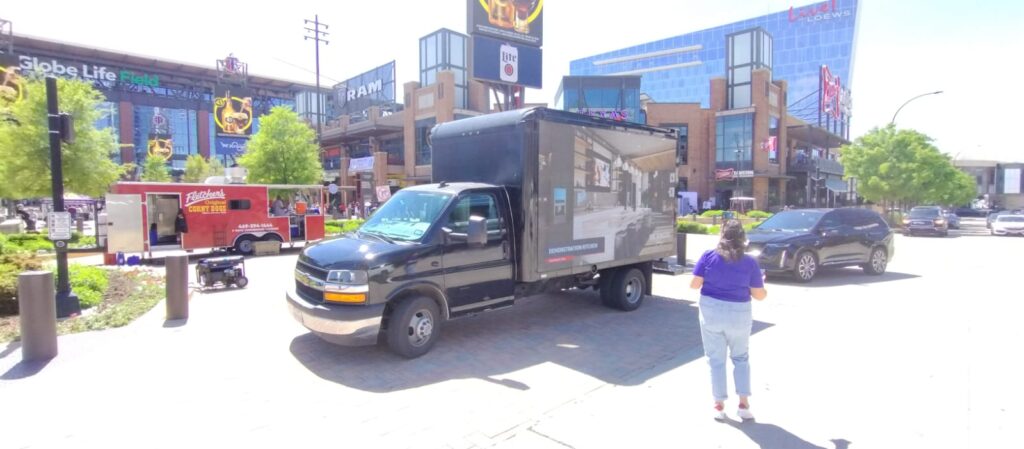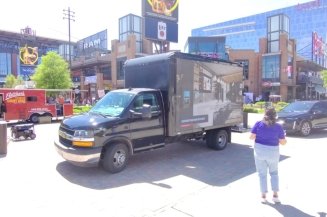Truck Advertising vs. Bus Advertising: Deciding the Best Option for Your Brand

When it comes to marketing and advertising, every decision has the potential to propel your brand forward or leave it hanging back in the shadows. Though there are plenty of choices to make, one stands out in particular: the battle between two classics in outdoor advertising—truck advertising and bus advertising. Each offers its own benefits, but figuring out which one is best for your brand requires a bit of thought on your part.
Truck advertising, with its massive presence and excellent mobility, is king when it comes to capturing attention. As trucks head along busy streets and highways, they serve as the perfect mobile billboard for your brand. Meanwhile, bus advertising transforms average public transportation vehicles into mobile canvases, helping you reach new customers during their daily commutes or time spent on the town.
Below, we’re diving into both of these options, exploring their key positives and negatives. Whether you’re looking to improve visibility and versatility or are more focused on localized impact, we’ll help you figure out which option will help you meet your brand’s goals.
What Is Truck Advertising?
Truck advertising, also known as mobile billboard advertising, is when brands put their message or content on the sides or backs of trucks. These trucks typically travel predetermined routes, capturing attention as they head down busy streets, highways, and urban areas. One of the best things about truck advertising is how it exposes different brands to diverse audiences.
Positives of Truck Advertising
There are a handful of key advantages when it comes to truck advertising. This option has remained a powerhouse in marketing for decades, and there are plenty of reasons why. From towering billboards on wheels to dynamic campaigns that cross through busy areas, truck advertising is a fantastic way for your brand to leave its mark and reach new consumers.
- Increased Visibility: There’s no doubt that an ad on a massive truck is eye-catching. If you opt for this method, you’re sure to draw attention. Since trucks are so big, your brand message becomes an eye-catching focal point for people not only driving alongside it but walking as well.
- Targeted Reach: Brands love truck advertising because it allows them to choose routes and areas where their target audience spends time. With such a targeted approach, you can rest easy knowing that your money isn’t going to waste. Your message will reach the people you’re hoping to reach, allowing you to maximize your impact and dollars.
- Versatility: Whether you’re hoping to target residents of a busy downtown or families in a rural area, trucks can navigate either option. This helps your brand reach different people in different places versus something like a static billboard that remains in one spot.
- Cost-Effectiveness: Traditional billboards tend to cost more than truck advertising. If you go with this option, you’ll get the most out of your money without making a long-term commitment or paying higher costs that typically come along with fixed ads.
Negatives of Truck Advertising
These days, you want all of your advertising dollars to go to work. That’s why it’s important to understand the full picture (including any negatives) of both truck advertising and bus advertising. While truck advertising typically takes the cake when it comes to visibility and mobility, it’s not without its cons.
From limited targeting to environmental concerns, there are several things brands should consider before jumping on the truck advertising bandwagon, which we cover below. Take a look so you can understand how these drawbacks may impact your advertising dollars and brand’s overall success.
- Limited Targeting: Yes, trucks can cover large areas, but their routes are often established beforehand. This limits the way your brand can target certain people or locations.
- More Competition: Think about all of the vehicles that drive through an urban area. If that’s where you’re looking to target people, you risk having a lot of competition from other vehicles—not to mention other billboards and digital ads. This can potentially decrease the impact of your message.
- Environmental Drawbacks: If your brand or its consumers prioritize sustainability, truck advertising may not be the best choice. It contributes to carbon emissions and pollution, which may upset your customers, depending on their interests.
- Shorter Viewing Time: Unlike static billboards, where people can stop and take a look, truck advertising has limited exposure. Your message will move past consumers, potentially very fast, so your message might not be as effective as ads that stay in one place.
What Is Bus Advertising?
Bus advertising is when brands put their ads on both the inside and outside of a bus, using the vehicle as a mobile way to showcase their message. Since buses are essential forms of transportation in both heavily populated and smaller areas, they’re a great way for your brand to engage with new consumers.
Positives of Bus Advertising
Thanks to bus advertising, someone’s daily commute is transformed into a way for your brand to tell its story and generate leads. With plenty of benefits, bus advertising is another preferred choice for marketers looking to boost their impact and target new consumers.
Whether you opt for city streets or smaller neighborhoods, think of buses as mobile billboards that will turn the heads of both commuters and pedestrians. Repeated exposure is key when it comes to advertising, which is why buses offer a unique opportunity for your brand to connect with different people.
- Captive Audience: Commuters spend a lot of time on buses, ensuring your brand has the time it needs to leave a mark. Whether it’s during a daily commute or a fun ride with friends, passengers are more likely to notice and engage with bus advertising.
- Local Impact: Buses typically operate within standard routes and areas, so you can target local communities with ease. A more localized focus will help you tailor your message to resonate with specific demographics, preferences, and nuances.
- More Exposure: Unlike other outdoor ads, bus advertising has the benefit of repeated exposure to passengers who take the same bus routes daily. This frequency will reinforce your message and strengthen the connection consumers make with your brand.
- Environmental Bonus: If your audience appreciates sustainability, bus advertising is the way to go. You’ll already be using existing public transportation instead of putting another truck out on the road.
Negatives of Bus Advertising
Before you make an investment, you’ll want to weigh the pros and cons of bus advertising. That’s why we’re shining a light on the more negative side of bus advertising, as, like truck advertising, it also has its limits.
Because while bus advertising offers a mobile platform to reach different audiences as they commute around town, it’s not without its drawbacks. From limited reach in rural areas to different space constraints, there are several factors to consider before investing in bus advertising campaigns.
- Reduced Reach: Many bus routes don’t reach remote areas. So, if you’re hoping to target consumers who don’t live in bigger cities, a bus might not be your best option.
- Changing Visibility: Weather, traffic, and route changes can all impact the visibility of bus advertising. As these things change, your ad might reach fewer people, making your dollars less effective.
- Spacial Limits: Some buses have interesting layouts, which can change the size and placement of your ads. If you’re hoping to be creative and design a big ad, a bus might not be the best spot for your work.
- Competing Attention: Buses can actually be distracting, meaning you’ll have to compete for the attention of passengers. Between in-person conversations and people playing on their phones, your ads might struggle to make an impression.
Making the Right Choice for Your Brand
When deciding between truck advertising and bus advertising, you’ll want to consider a handful of things. Take a look at the questions below so you can choose between these two advertising powerhouses.
- Your Audience: Who are you trying to target? Where do they prefer to hang out? Think about the demographics of your people and where they’re most likely to engage with your ads.
- Your Reach: Do you want to reach a larger audience in different locations? Or are you only focused on one community? Considering your reach is a great way to select the type of ad that will have the biggest impact on your reach.
- Your Budget: How much are you hoping to spend on your ads? Can you afford both truck advertising and bus advertising? Determine which option best suits your budget before you make any other decisions.
- Your Messaging: Will your message fit on a truck or bus? Start by developing your overall message to see which medium will best represent it.
When you weigh the pros and cons of truck advertising and bus advertising, you’ll have a much easier time deciding what’s going to be best for your brand. Putting in the time will allow you to make an informed decision, so you can feel confident that the money and time you spend are being put to good use.
From demographics to budget to messaging, there are plenty of things to consider before signing on any dotted lines. The good news is, both options offer a handful of advantages that will help you effectively reach your ideal consumer.
Whether you pick the high visibility of truck advertising or the localized impact of bus advertising, by considering the above criteria, you’ll feel good about your choice. Here’s to driving brand awareness, generating new leads, and standing out from the competition!
Back to Blog
